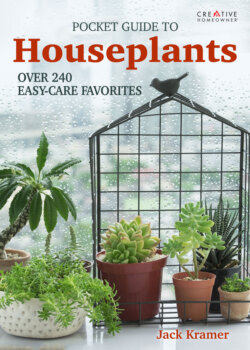Читать книгу Stitching Pathways - Jack Kramer - Страница 24
На сайте Литреса книга снята с продажи.
Seasonal Changes
ОглавлениеSummer
Fertilize (see here) plants that are actively growing now. Protect plants from hot sun by means of a sheer curtain or window screen. Provide good humidity and ventilation—houseplants do not thrive in a stuffy atmosphere. Inspect for insects at this time of year as well.
Many houseplants enjoy and really benefit from a summer vacation outdoors. In early summer, when the nighttime temperatures no longer drop below 60°F (15°C), you can safely move tropical houseplants outdoors.
Fall
As summer draws to a close, before the weather turns cool—and certainly before there’s even a remote possibility of frost—bring your houseplants indoors. Don’t forget to bring in clay pots, which crack in freezing temperatures. In the fall, when days can fluctuate between warm and cool, water attentively, giving each plant the amount it needs. Remember: never try to force resting plants to sprout new growth. At this time, let the soil become somewhat dry but not caked between waterings.
Winter
Repotting of old plants (see here) is generally best done in February and March, just when they’re coming out of dormancy. This way the plants have moderate weather to resume active growth.
Spring
Most houseplants do the majority of their growing in spring and summer, so this is the time when they need the most water.
